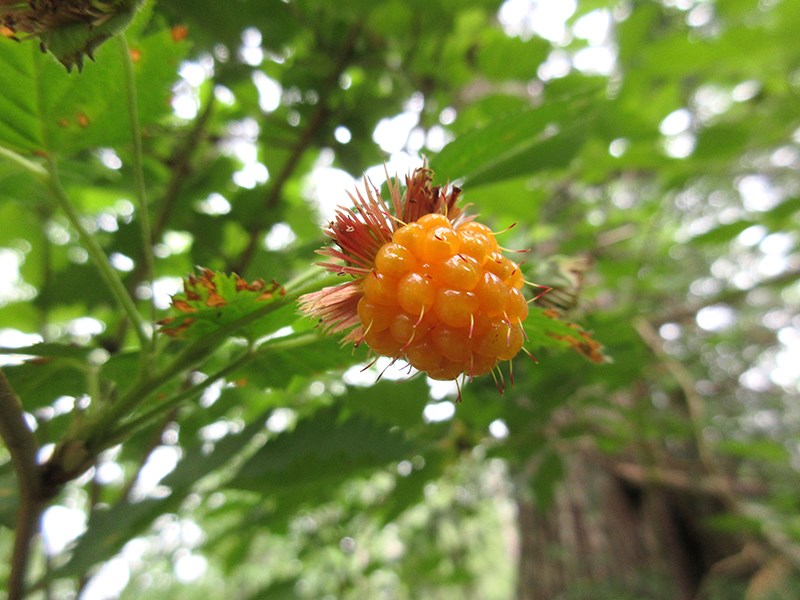It’s raining right now as I write this. Not a lot of rain, hardly enough to wet the ground, but at least it’s something, and I’m grateful. If you scratch around in the soil, it’s already dry half an inch down and it’s only the middle of May.
Everyone I’ve talked to this past couple of weeks out here in Lund is talking about how dry it is. We’ve already had two brush fires and the fire risk went straight from low to high last week.
“We walked down to the mailbox yesterday and were picking salmonberries,” said my neighbour a few days ago. “That’s a month earlier than I’ve ever seen them.”
According to Environment Canada, over the last 15 years our average rainfall for the month of May is somewhere around 60 millimetres. Average, that is, if you take out last year.
Last May, 12.6 millimetres of rain fell over five days. For comparison, in 2011, the first May I lived in Lund, 18 days of rain brought 88.9 millimetres. So far this May we’ve only had three days of rain.
We all remember how strange last year felt, like a freak of nature. Now it’s time for us to face the fact that this is our new normal. Climate scientists have been telling us for decades that this is the pattern we will see: drier and longer summers and winters with a greater volume of precipitation, but spread over fewer rainy days.
With each prolonged dry spell, it becomes harder for the soil to absorb rain when it does fall. Dry surfaces saturate immediately and the rest of the water just runs off.
Shorter and more intense rainfalls mean more erosion and flooding and less long-term storage of water in the soil to keep the forest growing; and the forest is what keeps us from burning up out here, facing southwest into the burning sun all summer on shallow soils.
The daily cycle of mature trees, drawing up water through their roots, breathing it out through the leaves and returning it to the ground as dew, is the life pulse of the land here.
We still have our forests and rivers. If we don’t want to become a grass desert, or a fiery inferno like Fort McMurray, we need to take action now to protect them, before it’s too late.



